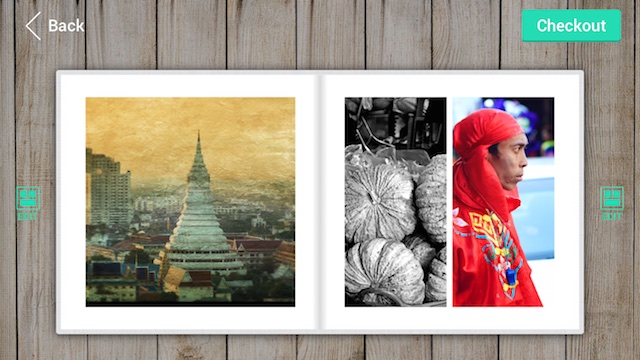Printastic: iOS App Produces Books from User's Photos

AMITIAE - Monday 4 May 2015
|
Printastic: iOS App Produces Books from User's Photos |
 |
|
|
By Graham K. Rogers
For a number of years, iPhoto has had a Books feature which was only available to users in certain countries. There is a similar feature in Aperture. When I took this point up with Apple management here a while back (2006), I was told that book printing was available. There was a catch however. I had to produce a PDF from the iPhoto output, take (or send) that to the company in Sukhumvit Road (behind the Emporium mall) and wait for a few days while it was processed. The glossy output was mailed to me at work. The book itself was fine. It just that this was not the slick automatic process from my home that Apple provides in other countries. With Aperture soon to come to the end of its life, Photos is now available. This has several useful features, some of which were of great help when I set up a new Mac mini this week. However, the in-app Book purchase is still only set up for certain countries: 21 in all. I was therefore interested to see recently a new app - released here in March - that allows a user to create a book from output on an iOS device: Printastic. As the Photos app on the iPhone or iPad may contain the same photographs as on a user's Mac, partticularly if iCloud Library is used, this has some value, especially as there are no restrictions concerning the country.

Opening Screen on iPad
PrintasticI usually start any review of an app that uses photography input by working on the iPhone. Despite its smaller screen size I am work with this on a day to day basis and am more comfortable with the device. This time, however, partly because of the intentions of the app, I reached for the iPad first. This was a mistake, but not wholly a problem with the app itself. Improvements do need to be made, however. I later switched to the iPhone and screen-shots are from that device.The interface is clean and intuitive. As with many apps, there are some introductory screens: nicely designed. On the opening screen, the price is shown: a 24-page book is $29 (960 baht); it ships within 5 days. There are two buttons: Start and Tell me More. After a quick look at the additional information, I started the process. A panel opens with a simple interface showing a blank front cover and following pages. The inside cover is always blank as is the rear cover. Each page has a small + sign in a green box. Pressing that reveals 5 control buttons: Add Photos, Edit Page, New Page, Clear Photos (initially greyed out) and Remove Page.
The iPhone has 128 GB of space, but the iPad is the 64 GB version, so when I set up the iCloud Library on the iPad I opted to store only basic images on the device to save space. I had plenty of space on the iPhone. As I began to choose certain images for the 3- and 4-photo pages in Printastic, the app slowed considerably and on a number of occasions crashed. Not once, however, was any data lost and I was able to pick up where I had left off.


Once all information was correctly entered, a panel appeared showing that the order was successful. In a matter of seconds I had confirmation from the credit card company and an email from Printastic.
As well as a personal record of photographs, this type of output would make an excellent gift. Some might also create a book like this as a form of portfolio. I am looking forward to the arrival of my book, although I am not optimistic that it will arrive in the 5 days shown in the app. The local post office does not have a reputation for lightning speeds. When it does arrive, I will follow up with comments on the quality of the printing. In the meantime, this has a qualified recommendation.

Graham K. Rogers teaches at the Faculty of Engineering, Mahidol University in Thailand where he is also Assistant Dean. He wrote in the Bangkok Post, Database supplement on IT subjects. For the last seven years of Database he wrote a column on Apple and Macs. He is now continuing that in the Bangkok Post supplement, Life. |
|

For further information, e-mail to
Back to
eXtensions
Back to
Home Page